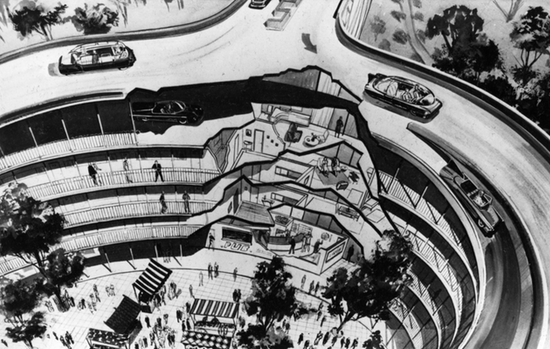There’s another excellent post at the Paleofuture blog, this one about Motopia, a never realized insta-city which completely separated pedestrian and automobile. It was designed in 1960 by British landscape architect Geoffrey Allan Jellicoe. The opening:
“‘No person will walk where automobiles move,’ is how British architect Geoffrey Alan Jellicoe described his town of the future, ‘and no car can encroach on the area sacred to the pedestrian.’
Jellicoe was talking to the Associated Press in 1960 about his vision for a radically new kind of British town—a town where the bubble-top cars of tomorrow moved freely on elevated streets, and the pedestrian zipped around safely on moving sidewalks. For a town whose main selling point was the freedom to not worry about getting hit by cars, it would have a rather strange name: Motopia.
Planned for construction about 17 miles west of London with an estimated cost of about $170 million, Motopia was a bold—if somewhat impractical plan—for a city built from the ground up. The town was envisioned as being able to have a population of 30,000, all living in a grid-pattern of buildings with an expanse of rooftop motorways in the sky. There would be schools, shops, restaurants, churches and theaters all resting on a total footprint of about 1,000 acres.“
Tags: Geoffrey Alan Jellicoe

